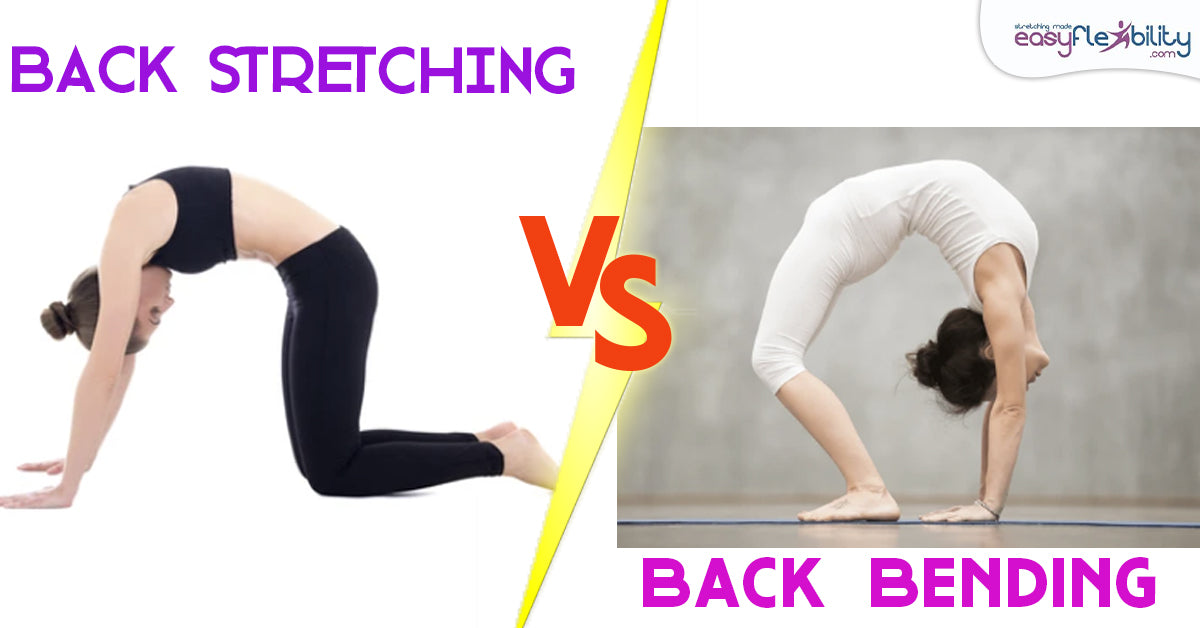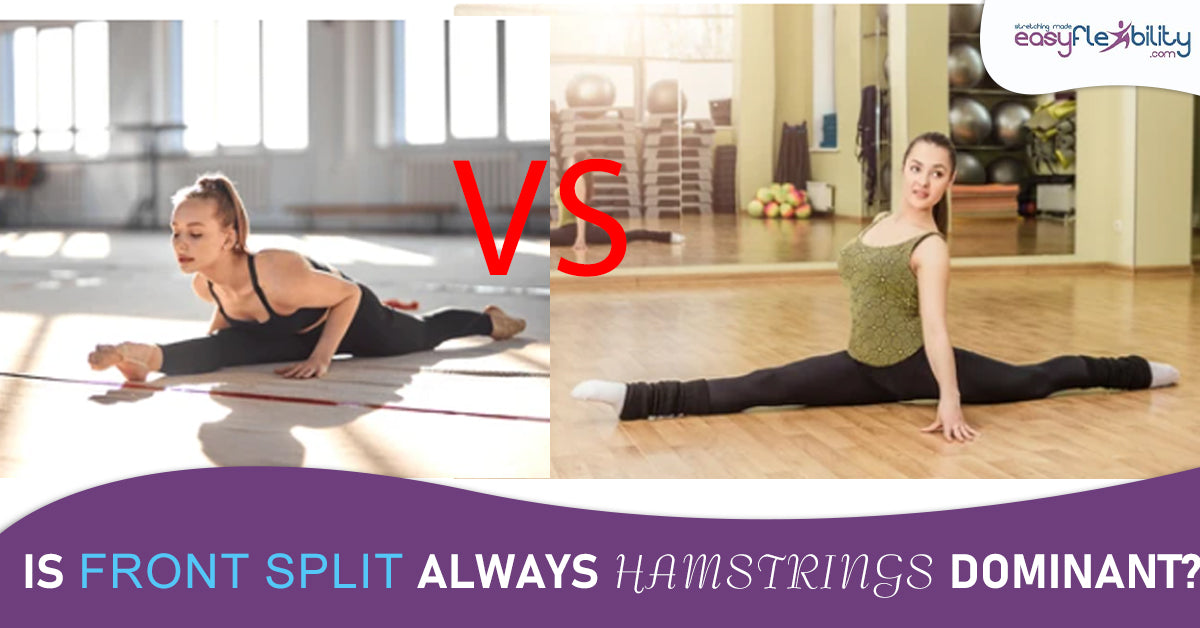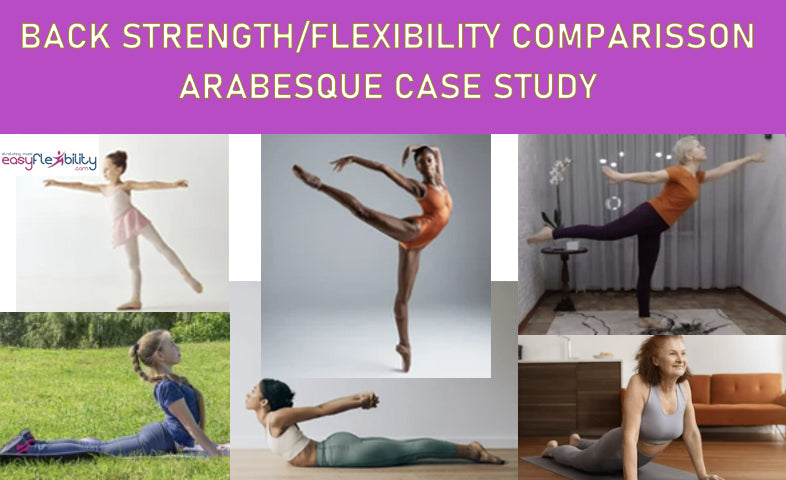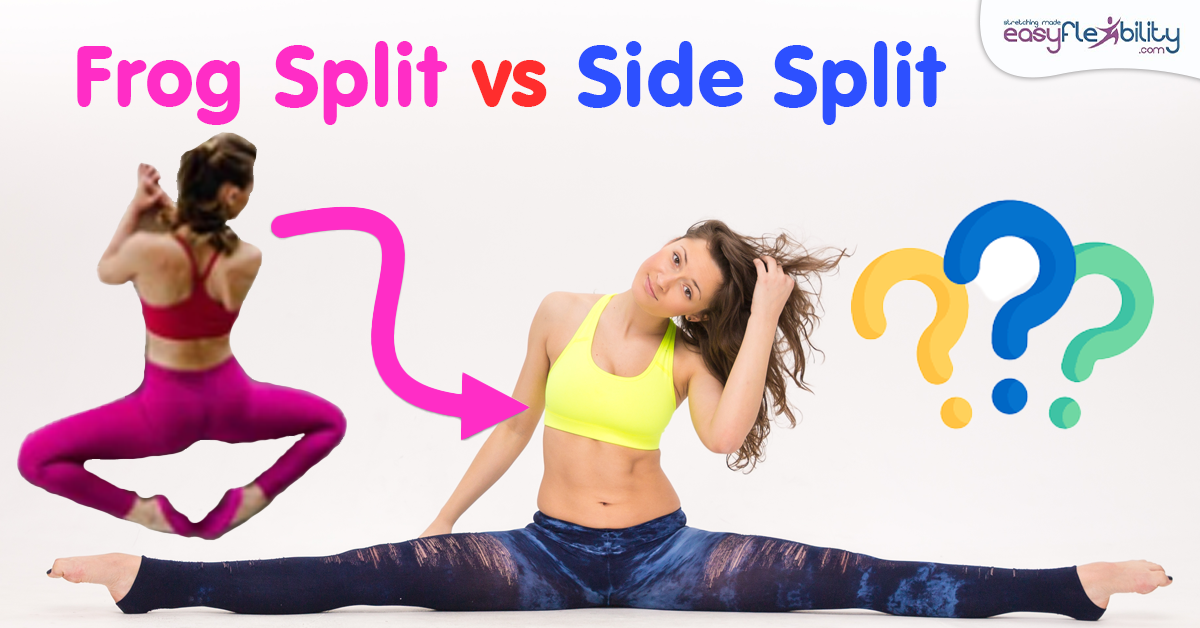Flexibility Training Program: Is it most beneficial standalone or with other fitness activities? [Case Study]
Posted by Paul Zaichik on
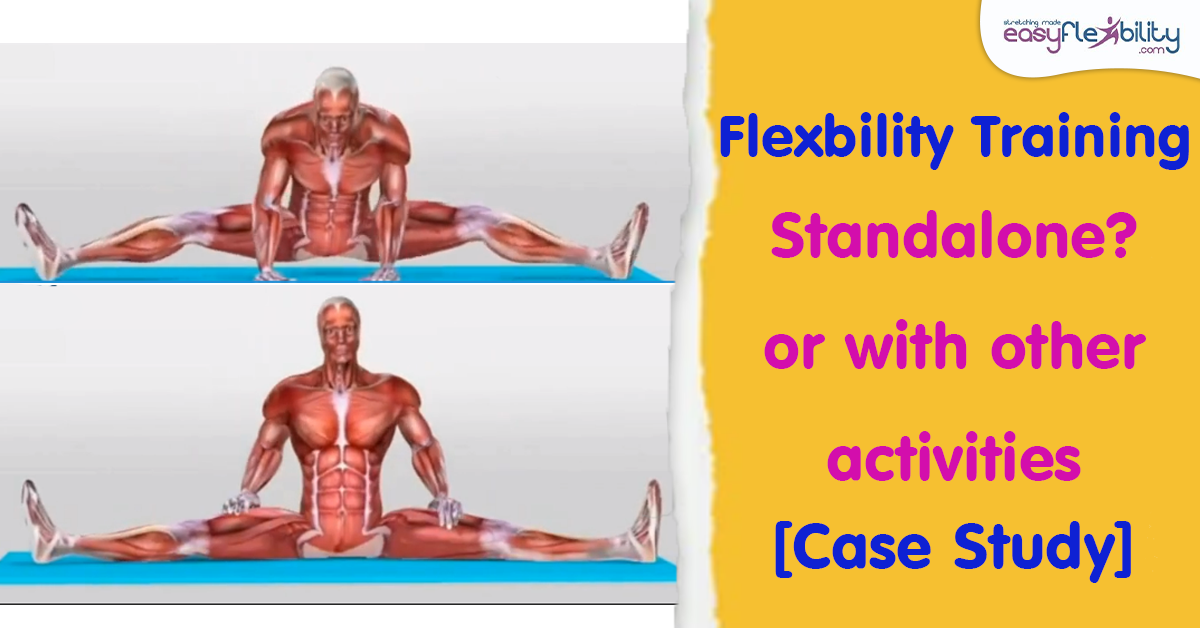
When I do my EasyFlexibility programs can I also do other fitness programs in one training session, at the same time?
The question that often comes up is “When I do my EasyFlexibility programs can I also do other fitness programs in one training session, at the same time? In other words can I do my Martial Arts training, Dance, Gymnastics, etc, and then right away do my EasyFlexibility training in the very same session? And If I do, will it hinder my progress? Or it doesn’t matter?” Turns out that it does!
According to a research study conducted by EasyFlexibility in August of 2022, whether you combine your EasyFlexibility training with other forms of training or not, matters a lot! We took a large random sample of EasyFlexibility practitioners who are using our Stretch180 app to keep track of their weekly and overall progress, and decided to see why some people have a better rate of progress than others.
The question we asked, among many questions was “Should you practice your EasyFlexibility programs standalone or with other fitness activities. Which one is better?” The answers that we got were compared to the database of each person, seeing what their weekly and overall rate of flexibility progress was. And the answers we got may or may not surprise you.
Perhaps you have experienced the same thing on your own and simply need a confirmation that what you're doing is correct. Or perhaps the results of our study will give you a guideline on whether you should combine your EasyFlexiiblity training with other forms of training in one workout session.
We have asked this question as part of our research into flexibility training. There were two choices.
According to a research study conducted by EasyFlexibility in August of 2022, whether you combine your EasyFlexibility training with other forms of training or not, matters a lot! We took a large random sample of EasyFlexibility practitioners who are using our Stretch180 app to keep track of their weekly and overall progress, and decided to see why some people have a better rate of progress than others.
The question we asked, among many questions was “Should you practice your EasyFlexibility programs standalone or with other fitness activities. Which one is better?” The answers that we got were compared to the database of each person, seeing what their weekly and overall rate of flexibility progress was. And the answers we got may or may not surprise you.
Perhaps you have experienced the same thing on your own and simply need a confirmation that what you're doing is correct. Or perhaps the results of our study will give you a guideline on whether you should combine your EasyFlexiiblity training with other forms of training in one workout session.
We have asked this question as part of our research into flexibility training. There were two choices.
- Choice one was: “My EasyFlexibility training is separate from other training.”
- And choice two was” “My EasyFlexibility training is combined with another fitness activity.”
While this is not an important factor to the results the answer was approximately 2 to 3. In other words, for every two people who practiced EasyFlexibility together with other forms of training. Three people practiced EasyFlexibility as a standalone method for their flexibility in a given workout session.
This, of course, doesn't mean that they did not practice other sports or fitness activities at another time. But a session was specifically dedicated to an EasyFlexibility training without any other training, such as martial arts or dance or yoga and so on.
The results were compared from two groups. The results were tracked by Stretch180 App. Results of overall progress and weekly progress were incorporated. The top and bottom numbers with great deviations were removed for both groups. The progress was measured in degrees and all the degrees were added and then divided by the number of participants.
This, of course, doesn't mean that they did not practice other sports or fitness activities at another time. But a session was specifically dedicated to an EasyFlexibility training without any other training, such as martial arts or dance or yoga and so on.
The results were compared from two groups. The results were tracked by Stretch180 App. Results of overall progress and weekly progress were incorporated. The top and bottom numbers with great deviations were removed for both groups. The progress was measured in degrees and all the degrees were added and then divided by the number of participants.
The results
What we found was that the group that has focused their workout sessions specifically on EasyFlexibility training, had a rate of improvement of 18.43% higher than the group that used EasyFlexibility together with other fitness activities in their workout session.
What does this actually mean? 18.43% is almost 20% of people. Which means that. Whatever the group results were. Let's say as an example, in a time of five weeks. The group that has only done EasyFlexibility specific exercises got the same results in 18.43% (nearly 20%) shorter length of the time. Which means that practitioners who used EasyFlexibility program alone got their results in roughly 4 weeks as opposed to the 5 weeks.
Now the rate of progress of course, was different for each individual. This is an average rate of progress for all individuals in the same group, either group
that did EasyFlexibility programs separately or in a group that did
EasyFlexibility together with other activities.
It's very important to understand that this is an average rate of progress. It is not a comparison of individual numbers. In other words, as an example, if you were to take two sports teams and one sports team is consistently beating the other sports team. This doesn't mean that every player on a winning team is better than every player on a losing team. There may be a player on the losing team that is better than a player on a winning team.
There may be someone in a slower progress group that made faster progress than someone in the fastest progress group. But this again is everyone's results added together and divided by the number of participants.
These results are consistent with the results that we got in controlled in-studio study in the past. The reason for this research study was to use a much larger sample than we could have possibly had in a studio. The drawback of this study is it was not controlled, and thus, we are simply going by the track progress using the Stretch180 App and the answers that are given by the research participants.
What does this actually mean? 18.43% is almost 20% of people. Which means that. Whatever the group results were. Let's say as an example, in a time of five weeks. The group that has only done EasyFlexibility specific exercises got the same results in 18.43% (nearly 20%) shorter length of the time. Which means that practitioners who used EasyFlexibility program alone got their results in roughly 4 weeks as opposed to the 5 weeks.
Now the rate of progress of course, was different for each individual. This is an average rate of progress for all individuals in the same group, either group
that did EasyFlexibility programs separately or in a group that did
EasyFlexibility together with other activities.
It's very important to understand that this is an average rate of progress. It is not a comparison of individual numbers. In other words, as an example, if you were to take two sports teams and one sports team is consistently beating the other sports team. This doesn't mean that every player on a winning team is better than every player on a losing team. There may be a player on the losing team that is better than a player on a winning team.
There may be someone in a slower progress group that made faster progress than someone in the fastest progress group. But this again is everyone's results added together and divided by the number of participants.
These results are consistent with the results that we got in controlled in-studio study in the past. The reason for this research study was to use a much larger sample than we could have possibly had in a studio. The drawback of this study is it was not controlled, and thus, we are simply going by the track progress using the Stretch180 App and the answers that are given by the research participants.
A quick discussion about the results
Why did the results come out this way? Well, EasyFlexibility programs are not a bunch of random exercises thrown together. They focus on every muscle that needs to be flexible for a specific skill. They focus on specific strength exercises to support the flexibility. There is a very precise warm up. Everything is done in such a way that flexibility supports the strength and strength supports the flexibility for a very, very direct goal. Adding many other techniques into the mix can throw off this equation.
For example, someone may train the muscles doing strength training that are not involved in a specific flexibility goal and use up the body's energy resources there, instead of focusing on the muscles that support the flexibility. As you already know, top maximum flexibility results in the EasyFlexibility system come at 5 to 6 rounds. 1 round is a combination of a set of ALL the ZST's (Zaichik Stretching Techniques) that are listed in a program, followed by ALL the supporting exercises that are listed in the program. And if someone is doing other activities, they simply may not have the energy or the time to get up to those rounds.
Since this is not a controlled study, it is not possible to know exactly what was done in addition to each persons workout. Perhaps if someone did exercises in the additional activity to EasyFlexibility programs that indeed supported the program. The results might have been better than if they have not done those exercises.
If a person really knows what they are doing, they can structure their training program to support EasyFlexibility programs or structure EasyFlexibility programs to support their training. Usually, people who took the EFTC (EasyFlexibility Instructor Training Certification Course), EASYSPLITS Certification Course, or any other EasyFlexibility certification course, have an idea how to do this. But for a lot of people who don't, there is a risk that the other activity can slow down the flexibility gains from the EasyFlexibility programs.
Average once again is different than individual. So, for some people, the slow down might have been significant. For others, it might have been very little. The average value again, was close to 20%.
In conclusion, if you are comfortable with what you are doing, you can combine EasyFlexibility programs with something else. If you are not comfortable, you don't know how to do it. And your goal is to get a specific skill as fast as possible. Your best bet is to just stick to EasyFlexibility programs which have been scientifically designed to balance out strength and flexibility needed for a specific goal.
For example, someone may train the muscles doing strength training that are not involved in a specific flexibility goal and use up the body's energy resources there, instead of focusing on the muscles that support the flexibility. As you already know, top maximum flexibility results in the EasyFlexibility system come at 5 to 6 rounds. 1 round is a combination of a set of ALL the ZST's (Zaichik Stretching Techniques) that are listed in a program, followed by ALL the supporting exercises that are listed in the program. And if someone is doing other activities, they simply may not have the energy or the time to get up to those rounds.
Since this is not a controlled study, it is not possible to know exactly what was done in addition to each persons workout. Perhaps if someone did exercises in the additional activity to EasyFlexibility programs that indeed supported the program. The results might have been better than if they have not done those exercises.
If a person really knows what they are doing, they can structure their training program to support EasyFlexibility programs or structure EasyFlexibility programs to support their training. Usually, people who took the EFTC (EasyFlexibility Instructor Training Certification Course), EASYSPLITS Certification Course, or any other EasyFlexibility certification course, have an idea how to do this. But for a lot of people who don't, there is a risk that the other activity can slow down the flexibility gains from the EasyFlexibility programs.
Average once again is different than individual. So, for some people, the slow down might have been significant. For others, it might have been very little. The average value again, was close to 20%.
In conclusion, if you are comfortable with what you are doing, you can combine EasyFlexibility programs with something else. If you are not comfortable, you don't know how to do it. And your goal is to get a specific skill as fast as possible. Your best bet is to just stick to EasyFlexibility programs which have been scientifically designed to balance out strength and flexibility needed for a specific goal.

About the Author:
Paul Zaichik is an Exercise Science Expert, author of multitude of books, and the creator of Zaichik Stretching Technique (formely known as Kinesiological Stretching Technique). His speciality is flexibility training as well as body weight conditioning. His innovative method is designed to have maximum carry over into specific athletic techniques. Paul is the author of books and DVD’s on the topic of flexibility, martial arts and bodyweight training. Over the years, Paul Zaichik has worked with a variety of individuals including athletes, entertainers, and military personnel. His ElasticSteel Method of Athletic Conditioning programs, EasyFlexibility Programs and Zaichik Stretching Techniques are used world wide by both professional and amateurs with great success.
© ElasticSteel Corp., EasyFlexibility, Paul Zaichik, et. El., 2022. No part of the materials available through ElasticSteel.com, EasyFlexiiblity.com, site may be copied, photocopied, reproduced, translated or reduced to any electronic medium or machine-readable form, in whole or in part, without prior written consent of Paul Zaichik EasyFlexibility.com, Elasticsteel.com.. Any other reproduction in any form without the permission of Paul Zaichik EasyFlexibility.com, Elasticsteel.com is prohibited. All materials contained on this site are protected by United States copyright law and may not be reproduced, distributed, transmitted, displayed, published or broadcast without the prior written permission of Paul Zaichik, EasyFlexibility.com, Elasticsteel.com.
Share this post
- 0 comment
- Tags: aerial arts, Ballet, cheerlading, Dance, dance attitude, figure skating, gymnastics, pole dance, stretch, stretching, time stretching, Training Flexibility, zaichik
0 comment

